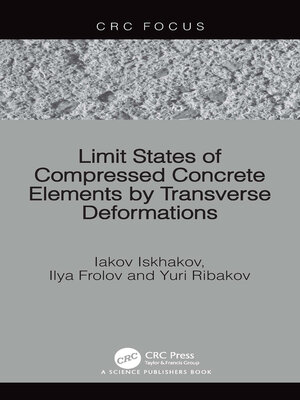
Sign up to save your library
With an OverDrive account, you can save your favorite libraries for at-a-glance information about availability. Find out more about OverDrive accounts.
Find this title in Libby, the library reading app by OverDrive.



Search for a digital library with this title
Title found at these libraries:
| Library Name | Distance |
|---|---|
| Loading... |
The theoretical stress-strain model for compressed concrete (Iskhakov and Ribakov, 2018), is based on the structural phenomenon and requires no empirical coefficients. It includes such main parameters of concrete behavior as stresses and strains at the border between the elastic and non-elastic behavior, ultimate elastic strains and stresses and strains at the end of the post-peak region. Particular attention was focused on the descending branch of the stress-strain diagram and on concrete elastic and plastic potentials that are important for dynamic response of concrete element section and for concrete creep.
The book presents experimental and numerical results confirming this model. It deals with experimental verification of theoretical models of cracking and failure scheme for cylindrical specimens. The importance of using transverse deformations for analysis of initiation and development of inelastic deformations under high loading rates is verified. The experimental and numerical results are in good agreement with the theoretical ones, which significantly reduces the number of empirical coefficients in compressed concrete elements design.







